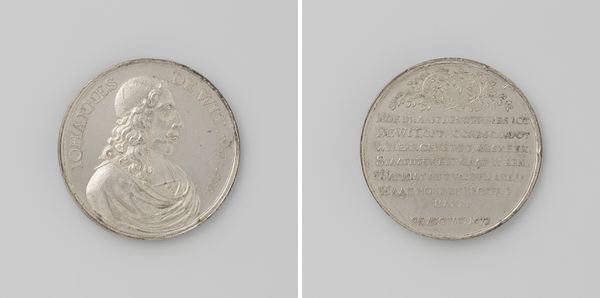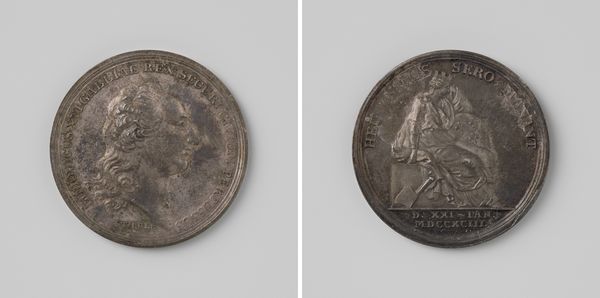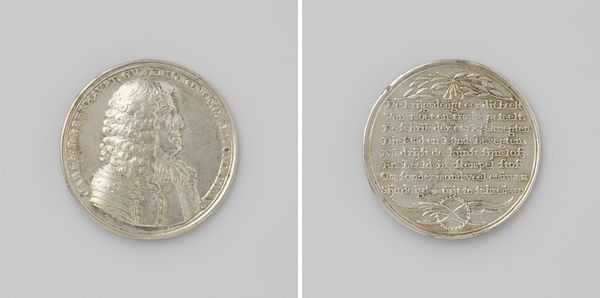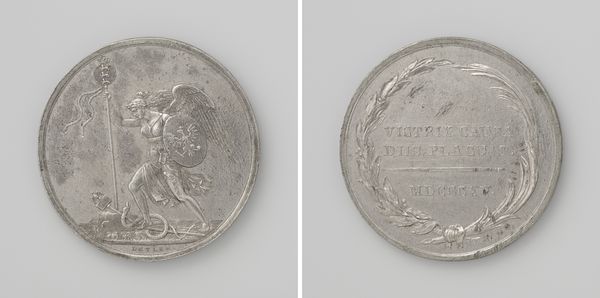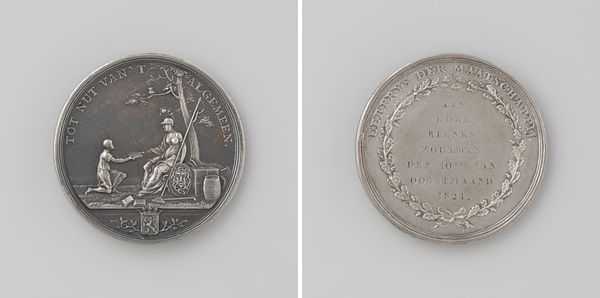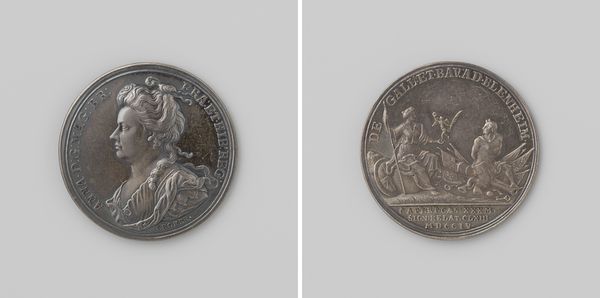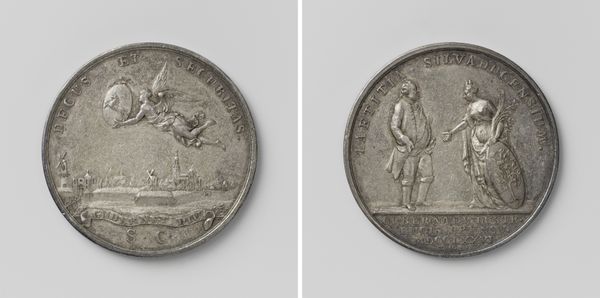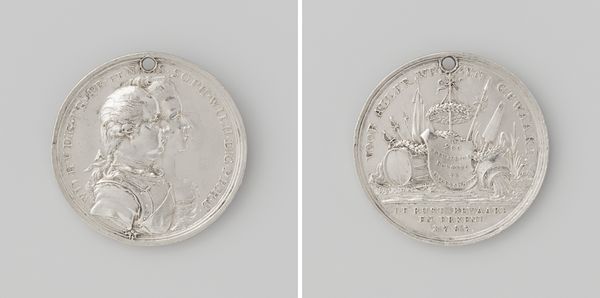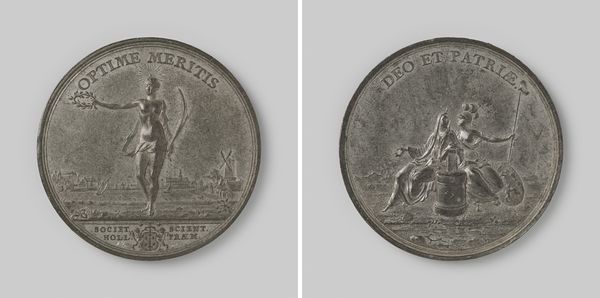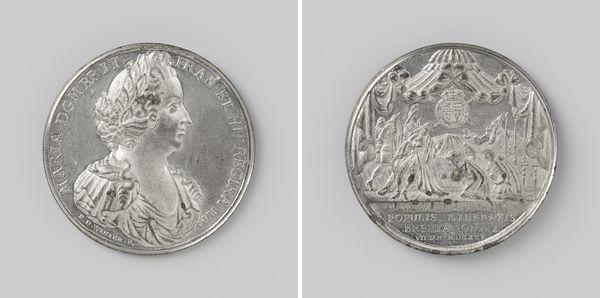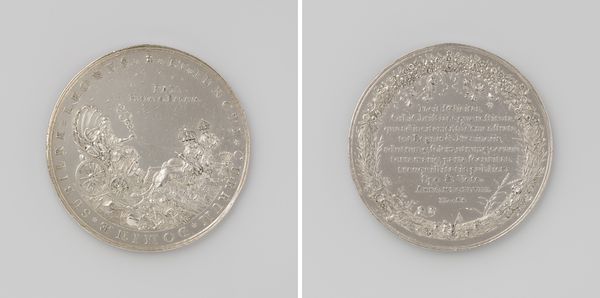
Vrede te Utrecht gesloten tussen Spanje en de Republiek, penning geslagen op last van de stad Amsterdam en geschonken aan de leden van de raad 1714
0:00
0:00
metal, relief
#
medal
#
allegory
#
baroque
#
metal
#
relief
#
history-painting
Dimensions: diameter 7.1 cm, weight 120.34 gr
Copyright: Rijks Museum: Open Domain
This silver coin was made to order by Willem de Wijs to commemorate the Peace of Utrecht, between Spain and the Dutch Republic. Coins like this were typically made using a die-striking process; a design would be engraved into a hardened steel die, which would then be used to impress the image onto a blank metal disc. The coin’s silvery color is no accident. In the 17th and 18th centuries, precious metals were used not only for currency, but also for art, and indeed, the line between the two was blurry. Silver embodied the wealth and power of the Dutch Republic at its height. The coin’s imagery, with a triumphant female figure, lions, and heraldic devices, speaks to the intense political and economic competition between European powers. The amount of work involved in making such a detailed object - from the mining of the silver to the engraving of the die - reflects the complex social and economic systems of the time. The coin offers a reminder that even the smallest objects can tell big stories about labor, politics, and consumption.
Comments
No comments
Be the first to comment and join the conversation on the ultimate creative platform.
